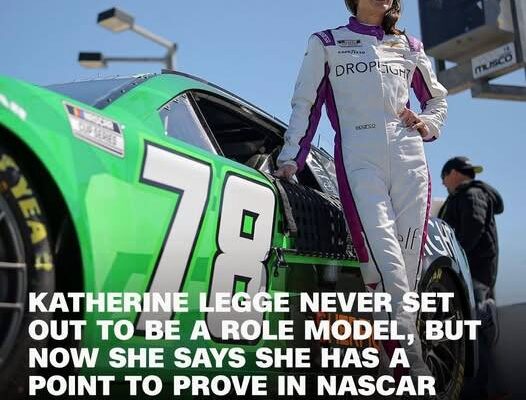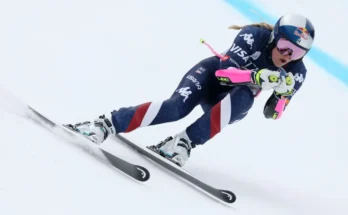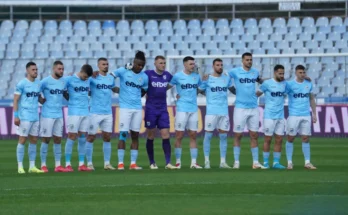When British racing driver Katherine Legge finally got her long-awaited shot at a NASCAR Cup Series race, she had hoped to quietly blend in.
Instead, as the first woman in seven years to compete at NASCAR’s top level—and with the race coinciding with International Women’s Day—Legge found herself in the spotlight at Phoenix Raceway.
Her debut was anything but easy, a true trial by fire. “An absolute roller coaster of emotions,” she told CNN Sports, while former NASCAR champion Kevin Harvick put it bluntly: she had been “thrown to the wolves.”
At 44, Legge brings a wealth of motorsport experience. “I’ve driven literally everything else on the planet,” she said. “IndyCar, Open Wheel, electric cars, sports cars—you name it, I’ve driven it.”


By her own admission, Legge had limited stock car experience, but she earned an invitation from Live Fast Motorsports, a team known for providing opportunities to emerging talent.
“They weren’t expected to be competitive or fast,” she explained. “My main job was simply to prove I was competent—just finishing the race would have been considered a success by most.”
However, Legge never made it to the finish line. Around two-thirds into the race, a second spin led to a crash with Daniel Suárez, who had been running in sixth place at the time. She had been battling to control her Chevrolet but was beginning to find her rhythm—until an ill-fated understeer on Lap 215 ended her day.
“I was bitterly disappointed,” she admitted. “I got a massive backlash from some of the fans, which was obviously not what I’d hoped for either.”
Legge was warned not to dwell on the negative comments online, but she understood the criticism surrounding her limited experience. Still, she posed a valid question: “The problem there is—how do you get the experience?”
Taking full responsibility for the incident, she quickly called Suárez to apologize. But she also felt she had been set up to fail. “There’s no testing, no real practice—just one session before qualifying, and then you go race,” she explained.
“I get the idea of working your way up through the ladder series, like Xfinity and Trucks, but the Next Gen Cup car doesn’t drive like an Xfinity car or a truck in any way, shape, or form. It’s its own unique beast. And the only way to gain experience is by racing.”

She believes that having a practice session would have eliminated the element of surprise, giving her—or any new driver—a chance to properly learn how to handle the car. “Did I make a mistake?” she asked. “Yes. But that’s also how you get better. Would I make the same mistake again? Absolutely not.”
Legge is grateful for those in the paddock who have recognized her difficult position and spoken up in her defense. Legendary driver, team owner, and broadcaster Dale Earnhardt Jr. highlighted what was essentially a triple disadvantage for her. “It does not help that she’s in a car that doesn’t do a lot of things right, and we don’t have any practice,” he said on his podcast.
Brushing off criticism from some fans, Legge expressed appreciation for the support from fellow drivers. “I’m very much grateful,” she said. “They know how hard it is. They recognize that it was a tall order, and they are the voices that should be listened to. While fans are the reason we go racing, their opinions aren’t always informed.”
It may have taken a high-profile incident like this to prompt NASCAR to reconsider its approach to new talent. But for Legge, a silver lining emerged—seeing the impact her participation had on young girls watching her race. Videos of their reactions circulated on social media, and she reposted one on Instagram.
“I never set out to be the representative for women in motorsports,” she said. “Each of us is an individual and should be judged on our own merit. But with that comes a responsibility, and I try to do the very best I can with it.”


“I see videos of young girls watching the race and thinking they can be anything they want to be because they see a girl driving a racecar. That’s what makes it worthwhile—making an impact on those lives is really special and means the world to me.”
Since Danica Patrick’s retirement in 2018, Legge has risen as one of the most prominent female racing drivers in the world. In 2023, she outqualified all her male teammates at the Indy 500 and became the fastest female ever to qualify for the prestigious race at The Brickyard. However, she doesn’t consider herself a trailblazer.
“Back in the day, it was Janet Guthrie and Lyn St. James who were really breaking barriers,” she told CNN. “There wasn’t even a female restroom in the pits back then. Right now, I’m just trying to be a racecar driver. I don’t feel any different.”
Legge is hopeful for another opportunity in NASCAR and is determined to prove she belongs. “For sure, it wasn’t my best work that weekend,” she said. “I didn’t showcase the talent I know I have, and I wish it had gone differently.
“I think the naysayers are wrong, so I’m definitely going to go back and try again. I love the NASCAR paddock, and I see a future there. And anyway, I need redemption now, right?”



